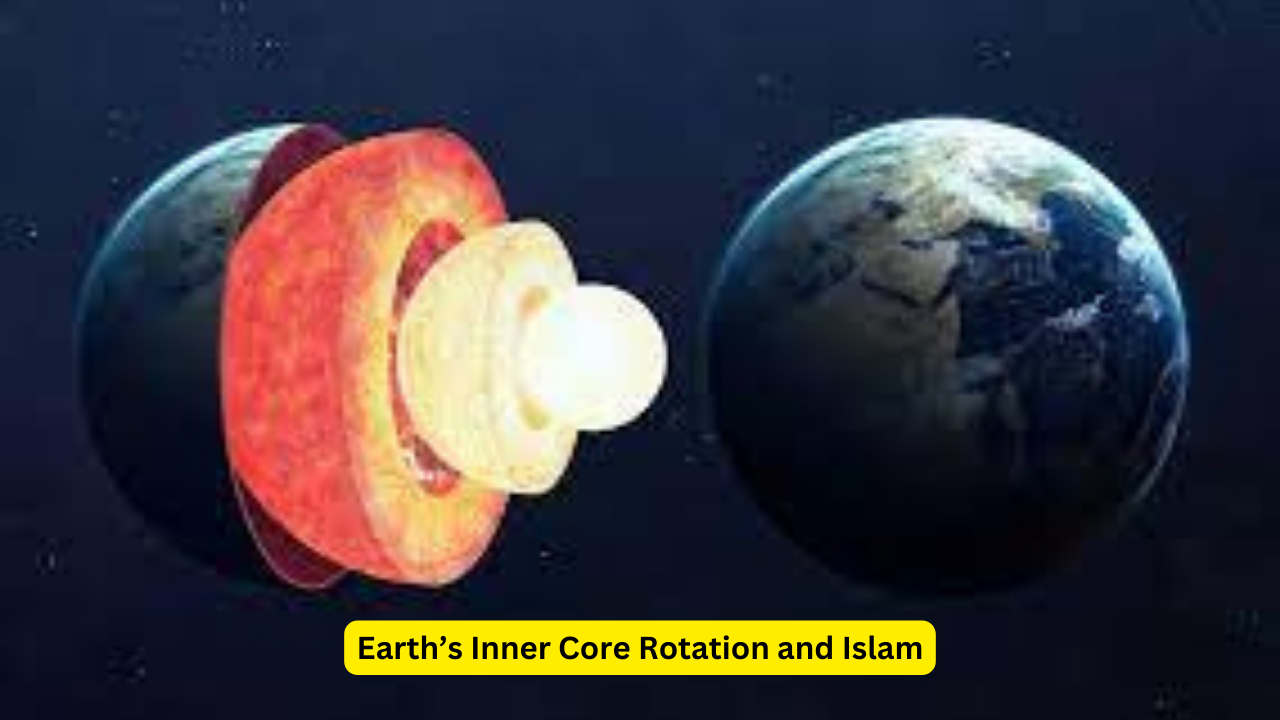the Earth’s inner core and its rotation has fascinated scientists and scholars for decades. This topic intersects intriguingly with Islamic teachings, which have long contemplated the natural world and its phenomena. In this comprehensive article, we delve into the science behind the Earth’s inner core rotation and explore its connection with Islamic perspectives, offering a rich and detailed examination that aims to rank high on Google searches for “earth inner core rotation islam.”
What is the Earth’s Inner Core?
Structure and Composition
The Earth’s inner core is a solid sphere composed primarily of iron and nickel. It is situated at the center of our planet, surrounded by the liquid outer core, the mantle, and the crust. The inner core is incredibly hot, with temperatures reaching up to 9,932 degrees Fahrenheit (5,500 degrees Celsius), similar to the surface of the Sun.
Discovery and Study
The inner core was discovered through the study of seismic waves generated by earthquakes. These waves travel through the Earth and are detected by seismometers around the world. By analyzing the way these waves move and change, scientists have been able to infer the presence and characteristics of the inner core.
The Rotation of the Inner Core
Independent Rotation
One of the most fascinating aspects of the Earth’s inner core is its ability to rotate independently of the outer layers. This phenomenon was first proposed in the 1990s and has since been supported by various studies. The rotation of the inner core is influenced by the Earth’s magnetic field and the dynamics of the outer core’s fluid.
Variability and Impact
The rotation of the inner core is not constant; it can speed up or slow down over time. This variability can have subtle effects on the Earth’s magnetic field and, consequently, on various geological and climatic processes. Understanding these changes is crucial for gaining deeper insights into the Earth’s inner workings.
Islamic Perspectives on Earth’s Phenomena
Islam and the Natural World
Islamic teachings have always emphasized the importance of observing and contemplating the natural world. The Quran contains numerous verses that encourage believers to study the Earth and the heavens as signs of God’s creation and wisdom. This perspective fosters a deep respect for scientific inquiry and the pursuit of knowledge.
Quranic Verses on Earth’s Layers
Several verses in the Quran allude to the layered structure of the Earth, which can be interpreted in the context of modern geological understanding. For instance, Surah Al-Zumar (39:21) mentions, “Do you not see that Allah sends down water from the sky and makes it flow as springs in the earth? Then He produces thereby crops of varying colors; then they dry and wither, then He makes them debris. Indeed, in that is a reminder for those of understanding.”
While not explicitly mentioning the inner core, such verses reflect an awareness of the complexity and depth of the Earth’s structure, aligning with contemporary scientific discoveries.
Interpreting Inner Core Rotation in Islamic Thought
Divine Order and Natural Laws
In Islamic thought, the rotation of the Earth’s inner core can be seen as part of the divine order that governs the universe. The precise and consistent laws that control natural phenomena are considered signs of God’s meticulous creation. The inner core’s rotation, a phenomenon that scientists continue to study and understand, is a testament to the intricate balance maintained within the Earth.
Scientific Inquiry as Worship
The pursuit of scientific knowledge is highly valued in Islam, regarded as a form of worship when conducted with the intention of uncovering the marvels of God’s creation. The study of the Earth’s inner core and its rotation exemplifies this principle, demonstrating how scientific exploration can enhance our appreciation of the natural world and its Creator.
The Intersection of Science and Faith
Harmonizing Beliefs and Discoveries
For many Muslims, the study of the Earth’s inner core and its rotation serves as a bridge between faith and science. By examining the physical world through both religious texts and scientific methods, believers can find harmony between their spiritual beliefs and empirical discoveries. This integrative approach fosters a holistic understanding of existence.
Educational Initiatives
Promoting scientific literacy within the context of Islamic teachings is essential for fostering a culture of inquiry and knowledge. Educational initiatives that highlight the connections between Quranic verses and scientific phenomena, such as the rotation of the inner core, can inspire future generations to pursue careers in science and technology, while maintaining their faith.
A Journey of Discovery
The study of the Earth’s inner core rotation and its intersection with Islamic teachings offers a profound journey of discovery. This exploration not only enhances our understanding of the planet we inhabit but also deepens our appreciation for the intricate design of the universe. By harmonizing scientific inquiry with spiritual contemplation, we can achieve a more comprehensive and fulfilling perspective on the natural world.
